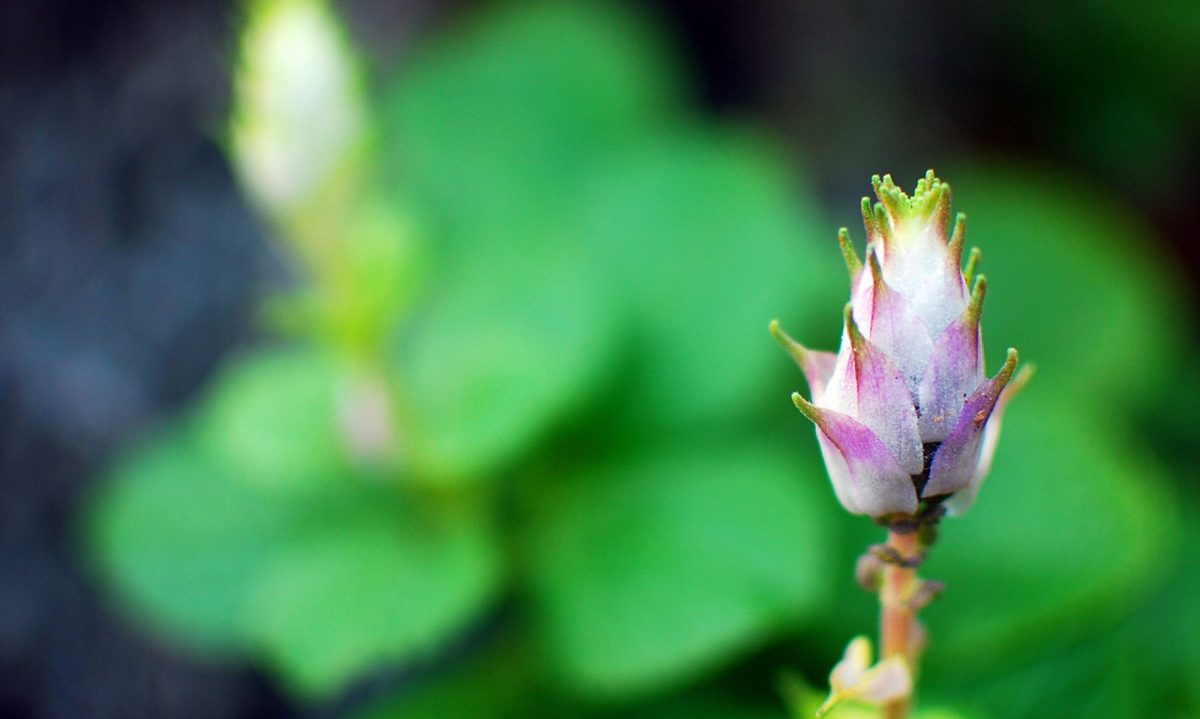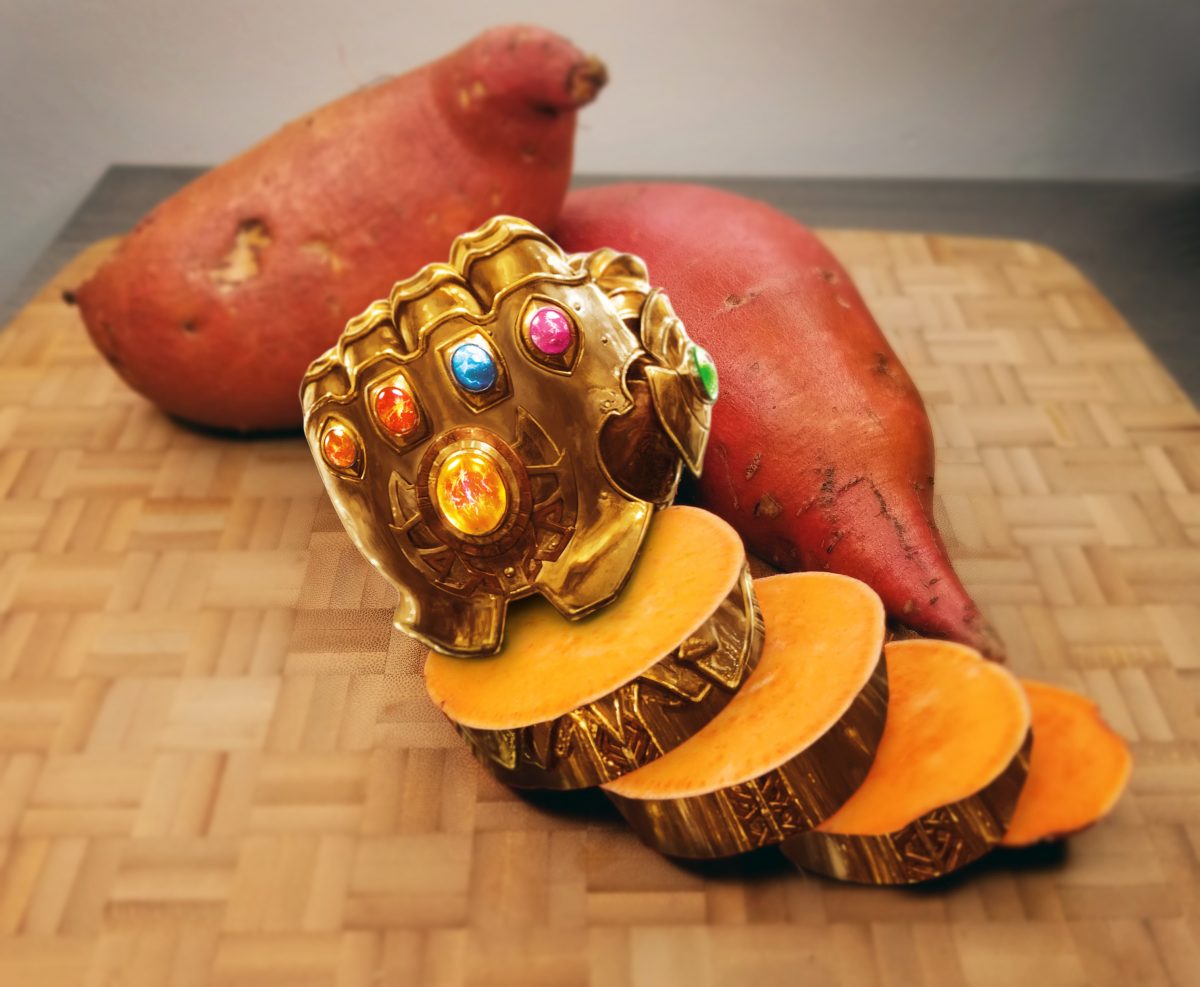This is by no means new information but I’ve recently propagated a bazillion sweet potatoes and was blown away by how quickly and easily I was able to get a ton of slips ready for the garden.
I’ve been giving my dog, Sasha, rather elaborate homemade meals for her hip dysplasia. Anything that’s healthy and a natural anti-inflammatory goes into this powerful meal. Fresh catfish nuggets oozing with Omega-3 fish oils, sweet potatoes, phytoplankton (puts the Omega-3s into those fatty fish), glucosamine , and CBD oil to name a few.
As you can imagine, this can all be a bit on the pricey side so I was looking for any way to ease up the pocket book pains a bit. That meant finding a way to get good organic sweet potatoes by growing them at home. So I started with one solitary store-bought organic sweet potato.

I’ve read that you can use a sweet potato cut into half or thirds if you want to stretch the potato budget a bit. I opted on an “all in” scenario cuz I’m crazy bold like that.
After a couple of weeks you’ll start seeing roots and then slips will begin popping up. Once this starts, it picks up speed quickly. I added a little bit of nitrogen to the water via blood meal to help boost slip growth, but just water works fine.


When the slips get to be about 4-5″ you can begin cutting them for rooting. There will likely already be root nodes forming near the base of the slip so I try to cut as flush to the sweet potato as I can.



Here are those nodes I was mentioning above. These will become your new roots.

I tried out the little glass test tubes shown below as I never have glasses that are narrow enough for rooting smaller clippings like these slips. The flat-bottomed ones will stand on their own which is helpful. Only gripe I had was that they are poorly packaged and some of them were damaged. The glass is rather thin so you can’t be heavy-handed with these guys. Also, the blood meal I get is below. A great natural way to boost nitrogen with a lessened risk of root burn and no nasty chemicals getting into the groundwater or drains etc. Blood meal and bone meal are great and often used around the Mind Your Dirt Luxury Estates.
I digress. The slips can root in just water. I place mine near my kitchen window which has great indirect light. So now all those stored sugars are trapped in the slip and they will use some of those sugars to push roots out of those nodes


It doesn’t take long for these roots to form and it will need refilling often if you’re using a smaller container like I use. I check on them every other day or so and refill as needed. Once the roots have filled in nicely, your slips are ready for planting.

In my little garden plot I dig a giant mounded row and staggered the plants within it. I’ve read that you want a good size mound with nice loose soil and good drainage. Any compacted soil or rocky soil will cause issues with your sweet potatoes during their long development. They take from 90-170 days until you can harvest.
https://www.almanac.com/plant/sweet-potatoes





The beauty of this, like many other veggies, is I can keep this one single organic sweet potato growing again and again until the end of time! Infinitato!! Although it should be noted that you never want to plant root veggies in the same bed twice! Always rotate your crops to avoid depleting the soil and hosting potential diseases. But still, Infinitato!!!



90 to 170 days is a long stretch. How does one know where in that range their sweet potato will fall. (I’ve always wanted to do this, but never knew how.) How does one know when they’re ready?
I believe the vine will yellow and begin to die once the potatoes are ready. But just in case, I’ll probably do some exploring with my hand to feel it out.
Sweet jumpin’ tater tots, that was fascinating! We’re crossing fingers and paws here that you’ll reap a sweet potato bonanza
Sasha is as well. She’s grown rather attached to her fancy meals this last year. I fear that if I stop, she’ll eat me instead.
Thank you for sharing this with us, James! I’ve been making our dogs’ (3 year old Malamute and 13 year old Pomeranian) food for many years, and I incorporate purple sweet potatoes from my own garden. They’re even easier to grow than you may think. I just cut off the ‘eyes’ whenever I harvest them and plunk those right back into my garden – we’re overrun with them now! I just harvested about 3 #s on Saturday because the plants were covering all my other vegetables. The potato grows straight down, so you’ll want to dig deep when you harvest. If your soil is loose enough, you may want to feel down the side of the potato with your fingers whenever you think they’re ready – you’ll be surprised how big they grow in no time at all! This harvest had only been growing about 3 months, so on the short side of your timeline.
Ginger and turmeric are also wonderful anti-inflammatory roots you can grow here that are good for Sasha and you. I add them to my dogs’ food as often as I can.
We adopted our Malamute, Dozer (short for Bulldozer) a year ago from the Humane Society. He weighed 140 lbs, but should only weigh around 90 lbs. He refuses to get on the scale at the vet, but with our careful feeding plan and as much exercise as we can get, he’s looking about right now, and he LOVES his food!
I really look forward to your posts, and I’m so glad to know that you prepare your dog food, too. I think of commercial dog food the same as processed people foods – you can certainly consume them, but they are not FOOD.
I hope you have a wonderful day!
Thanks Donna! I know a Donna Williams by the way. She’s an objects conservator I worked with years ago.
Sasha is currently getting sweet potatoes, fresh catfish, turmeric, glucosamine, and seasonal veggies that I make into a fish stew and lay over her kibble. With her hip displasia and then a torn ligament I wanted her to have every advantage for healing. She’s responded so well and her weight is right where it needs to be.
The vet wanted to put her on anti-inflammatories but then we’d need regular, and expensive, blood tests to see if the meds would be killing her liver or not. Or was it kidneys? Either way, I said hell no! There are far too many healthy and natural anti-inflammatories available. Side effects for those? Healthy skin, shiny fur, and happy dog.
Those I can live with.
Hi! I found you on Projectophile’s blog and loved reading your approach to community-building and garden-growing. Thank you so much for these excellent illustrated steps to sweet potato propagation. I live in a high rise (a necessity of aging in my case) and miss my garden immensely. I have huge tubs of soil and I’m going to try the sweet potato solution in one of them. We’ll see what happens. I’ll have small Sungold tomatoes in a second huge tub, and the third will hold my decorative allium, which is outgrowing its smaller pot and now has several plants. I received my permaculture certification about ten years ago, and find it daunting to apply any of that learning to life on an 18-foot balcony facing Lake Michigan, but the challenge and the effort are what it’s all about. Thanks again for sweet potato inspiration!
Hi Betsy! Thanks so much for your kind words. It means a lot, especially from someone who has studied permaculture!
Oddly enough, I’ve found that the slips I plant in pots seem to do better than the ones in the ground. I imagine this is due to soil impaction. In other words, you may have an advantage up in your tower.
I spent many years in apartment complexes and am no stranger to the limitations of being surrounded by cement. Nonetheless, my patio was bursting with plants. It inspired a great deal of creativity. I also found a love for bonsai during this time. Smaller footprint but it requires a lot of attention so I got that gardening feeling. Maybe something to explore? Your location means you can do the classics like beautiful maples! I can only dream of maple bonsai here in San Diego.
Thanks again for writing! And please check out some other blog posts while you’re here!